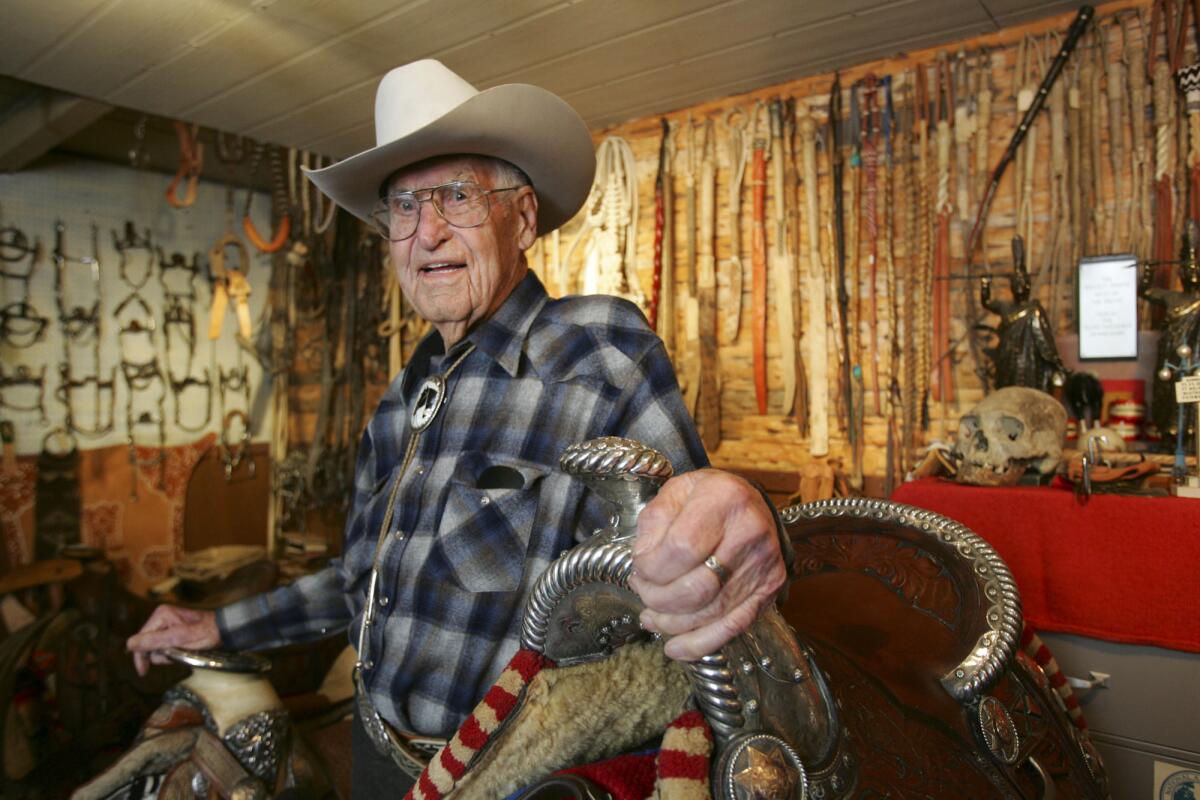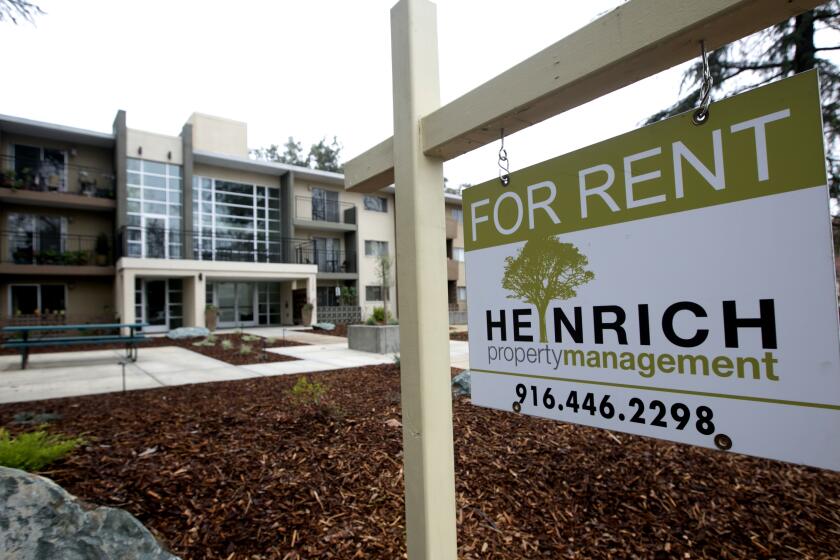‘An offensive and painful public reminder’: The battle over a statue of former Palm Springs Mayor Frank Bogert

Good morning, and welcome to the Essential California newsletter. It’s Wednesday, Aug. 25. I’m Justin Ray.
In Palm Springs, there is a disagreement over a statue. No, I’m not talking about the one of Marilyn Monroe; I’m talking about former Mayor Frank Bogert’s likeness in bronze outside City Hall (photo below).
This year, the city’s Human Rights Commission recommended that the statue be removed. A separate 2020 Change.org petition has 2,887 signatures. But the movement has sparked the formation of a new group called “Friends of Frank Bogert” to defend the ex-mayor’s legacy and respond to “a false, slanderous and overtly political attack on Bogert.”
So why do people want to get rid of the statue? Well, mainly because of an awful moment in Palm Springs’ history.
First, we have to take a step back. Blacks and Latinos began moving in earnest to Palm Springs during World War II, lured by the prospect of work on nearby farms and in defense factories. Most settled in an area called Section 14, a square mile of desert in the heart of town owned by the Agua Caliente Band of Cahuilla Indians.
Meager wages and a lack of job opportunities meant the population was impoverished. “Workers and their families leased small plots and put up shacks, wood-frame houses, cinderblock houses,” The Times has reported. City officials believed that if Palm Springs was to ever lure tourists, this area would have to change.
So what happened? The city removed people from their homes to facilitate commercial development. Many of those evicted didn’t receive prior notice before their homes were burned down or demolished. Belongings were stolen. Frank Bogert — the mayor at the time — was a big advocate of the effort.
“I was scared to death that someone from Life magazine was going to come out and see the poverty, the cardboard houses, and do a story about the poor people and horrible conditions in Palm Springs just half a mile from the Desert Inn, our high-class property,” Bogert told The Times in 2001.

The city-funded home razing led to an investigation by the state attorney general’s office. A resulting 1968 report compared the city’s actions to a holocaust and said it was a “classic study in civic disregard for the rights and feelings of minority citizens.” But the office did not find the city broke any laws. Bogert denied the report’s claims.
That’s why some want the monument removed. The statue, erected March 21, 1990, is “widely perceived as an offensive and painful public reminder of a legacy of urban renewal that banished the vast majority of people of color from the city limits, and the present realities of systemic racism born out of his mayoral leadership from 1958-1966,” states the beginning of a three-page proposed resolution by the Human Rights Commission. It released an exhaustive report detailing the displacement and its affect on residents.
In an 85-page rebuttal to the HRC report, Friends of Frank Bogert disputed the commission’s conclusions and argued that it was politically motivated. Bogert “worked tirelessly to minimize the effects of Section 14 evictions and to seek low-cost housing for its residents,” Friends of Frank Bogert wrote.
The debate over the statue is one of many disagreements over monuments that have taken place in California in recent years. The Human Rights Commission’s resolution is set to go before the Palm Springs City Council on Sept. 29, according to the Desert Sun.
For further reading about Palm Springs and its history with race, I highly recommend this 2001 piece that begins with a “senior prank gone awry.”
And now, here’s what’s happening across California.
Note: Some of the sites we link to may limit the number of stories you can access without subscribing.
Subscriber exclusive: A toxic stew of anti-Asian racism, anti-vaccine vitriol roils Orange County. People in Little Saigon are anxious and angry after Board of Supervisors Chairman Andrew Do was called a “communist parasite” and told to “go back to Vietnam.” Between anti-lockdown rallies, pushback against mask mandates and a restaurant catering to the unvaccinated, Orange County has also seized the spotlight as a nexus of aggressive COVID denialism — even if the protesters are a small minority of residents. Los Angeles Times
L.A. STORIES
Los Angeles Fire Department captain attacks city’s vaccination requirement, prompting internal investigation. Capt. Cristian Granucci, a 31-year veteran of the department, delivered a searing criticism of the city’s new COVID-19 vaccination requirement in a video posted to YouTube. It was a rare public outburst by a member of the Fire Department. The ordinance is awaiting Mayor Eric Garcetti’s signature. The Fire Department said in a statement that the matter has been submitted to its Professional Standards Division for investigation, which may result in disciplinary action. Los Angeles Times

Our daily news podcast
If you’re a fan of this newsletter, you’ll probably love our new daily podcast, “The Times,” hosted by columnist Gustavo Arellano, along with reporters from across our newsroom. Every weekday, it takes you beyond the headlines. Subscribe on Apple Podcasts and follow on Spotify.
POLITICS AND GOVERNMENT
California Privacy Protection Agency aims to address data privacy. I usually link to articles, but this is a podcast episode. I really enjoyed this conversation with Jennifer Urban, chair of the California Privacy Protection Agency. Last year, California voters passed a proposition establishing the agency, which is just now getting up and running. In the interview, Urban explains why a state needs such a body and what privacy matters it can address. KQED
Big donors helping Newsom fight California recall also have a big wish list in Sacramento. The campaign to recall Gov. Gavin Newsom has turned into a money magnet — for Newsom. His anti-recall campaign raked in more money in its first five months — $54 million — than the $50.2 million his 2018 gubernatorial campaign raised over four years. Most of the money came in six- or seven-figure donations from longtime Democratic financial backers, including government employee and trade unions, as well as people and interest groups that stand to gain from a relationship with California’s governor. Los Angeles Times
CRIME AND COURTS
Remains of serial killers’ victims exhumed. The Calaveras County Sheriff’s Office cold case team has exhumed the remains of several people killed decades ago by two serial killers in the hope of identifying them through updated DNA technology. The unidentified human remains are associated with killings linked to Charles Ng and Leonard Lake, which occurred in Wilseyville in Calaveras County and in other places in California during the 1980s. Fresno Bee
Kristin Smart hearing: Police used jail informant to befriend Paul Flores, seek confession. A retired San Luis Obispo County Sheriff’s Office detective said investigators planted an informant in Santa Barbara County Jail to seek a confession from the man accused of murdering Kristin Smart. That informant remained in touch with Flores after their release from custody, even going on fishing trips and traveling to Las Vegas. It was not revealed whether that informant was a civilian or undercover law enforcement, or if anything was gained from the operation. San Luis Obispo Tribune
Support our journalism
HEALTH AND THE ENVIRONMENT
1,893 L.A. Unified students and staff tested positive for coronavirus last week, a group reports. A local group has calculated that 1,893 Los Angeles Unified School District students and employees tested positive for a coronavirus infection during the first week of school, based on a new dashboard created using district data. The number of cases, compiled by the group Parents Supporting Teachers, was based on adding individual figures for more than 1,400 district sites and was current through Sunday night. School district officials did not dispute the number, but noted that the total would probably change as the processing of first-week test results continued. Los Angeles Times
Worst fires in California history: Dixie, Camp and more. You might recall I did a newsletter detailing the worst fires in California. Well, The Times did that again ... except with cool graphics! Also, the new story details the most destructive fires in the history of the state. Los Angeles Times
CALIFORNIA CULTURE
How sports arenas became the poster child of California’s housing crisis. The state recently started tracking publicly owned lots that could be turned into affordable homes. In its first year, the state housing agency cited two major sports arenas — Angel Stadium in Anaheim and Pechanga Arena in San Diego — for cutting backroom development deals that shortchanged the public on affordable units. The agency is now eyeing Oakland Coliseum. Calmatters
Free online games
Get our free daily crossword puzzle, sudoku, word search and arcade games in our new game center at latimes.com/games.
CALIFORNIA ALMANAC
Los Angeles: Enjoy some wine! 88. San Diego: 81. San Francisco: Go for a run! 66. San Jose: 76. Fresno: 95. Sacramento: 86.
AND FINALLY
Today’s California memory is from Jim Cline:
As the sole passenger, I took the flight from LAX to San Diego on tiny Imperial Air on the evening of July 4, 1985 (“tiny” meant you and your luggage were weighed to meet restrictions!). Departing at 9 p.m. and following the coastline to San Diego, I was treated to a continuous display of spectacular July 4th fireworks just below the low-flying aircraft. One after the other for 45 minutes, each coastal community lit up their sky in a flashing, exploding, colorful celebration. No other fireworks show I’ve seen compares with that!
If you have a memory or story about the Golden State, share it with us. (Please keep your story to 100 words.)
Please let us know what we can do to make this newsletter more useful to you. Send comments to essentialcalifornia@latimes.com.
Start your day right
Sign up for Essential California for news, features and recommendations from the L.A. Times and beyond in your inbox six days a week.
You may occasionally receive promotional content from the Los Angeles Times.




